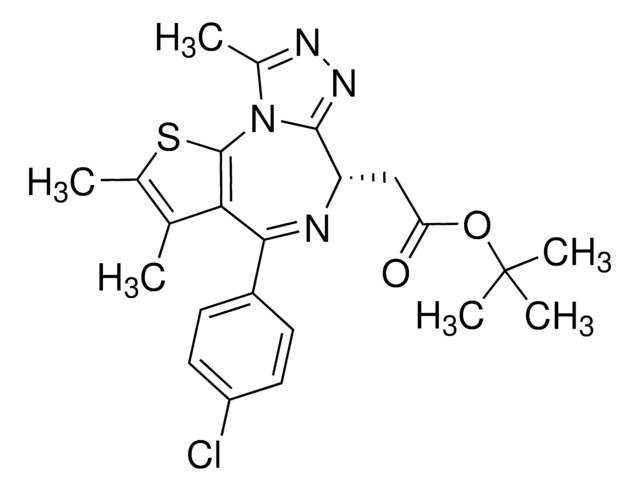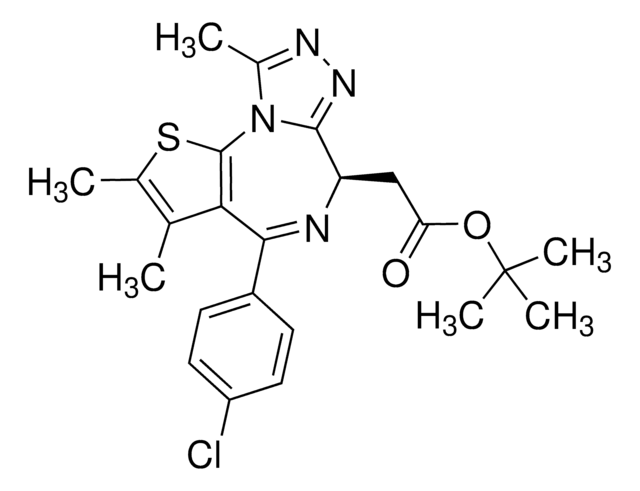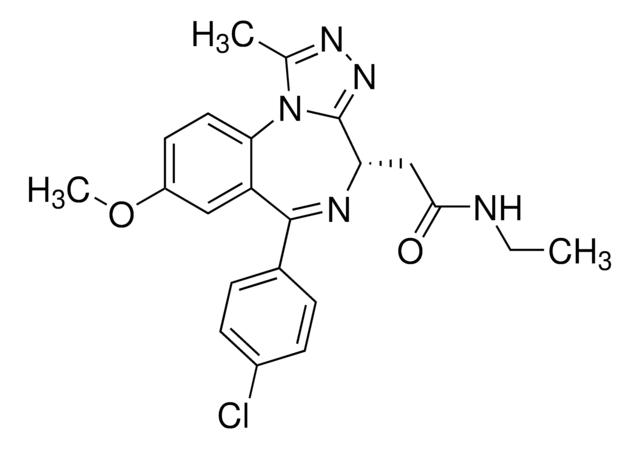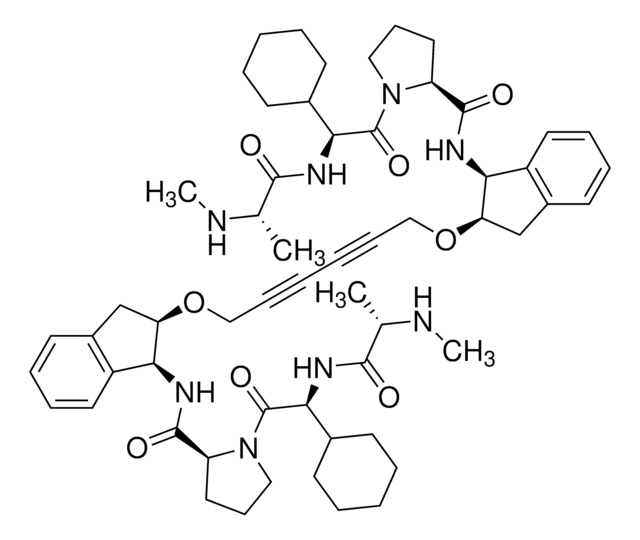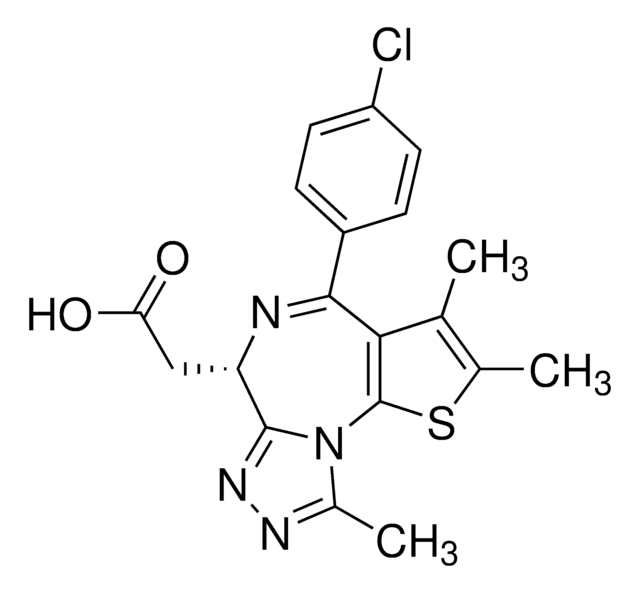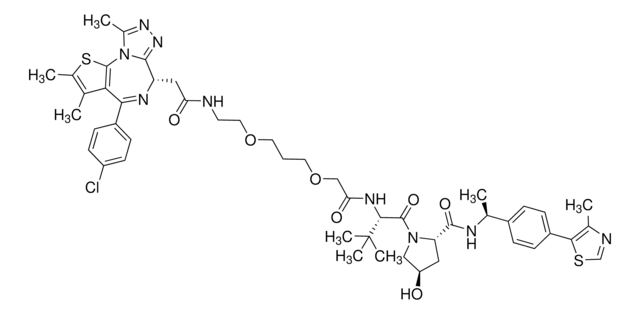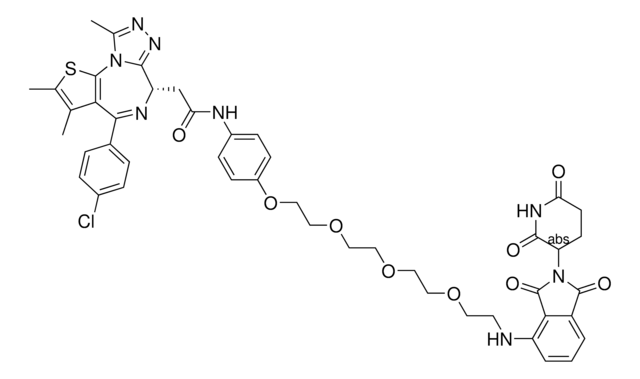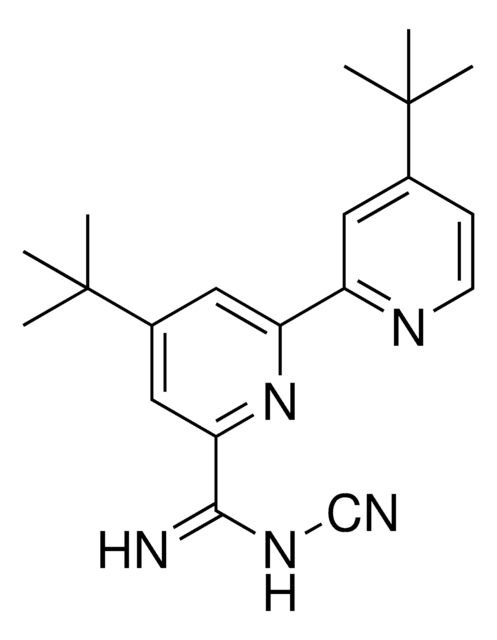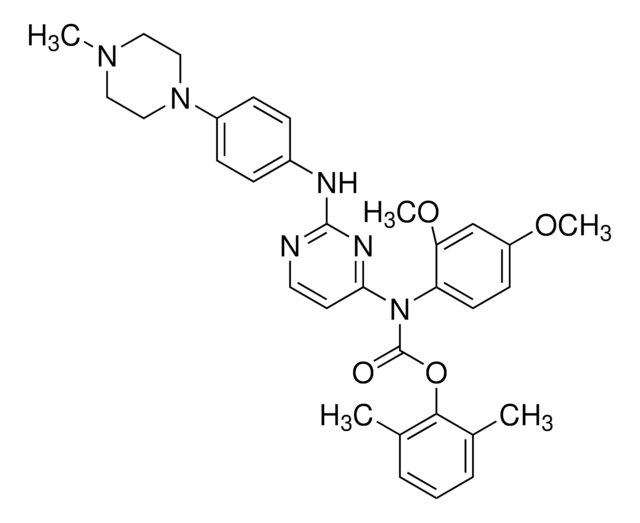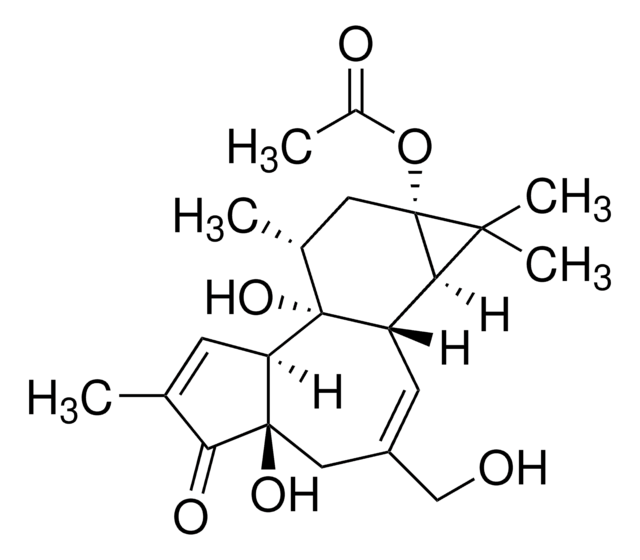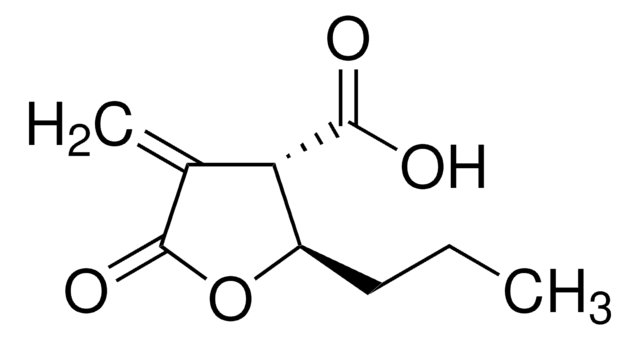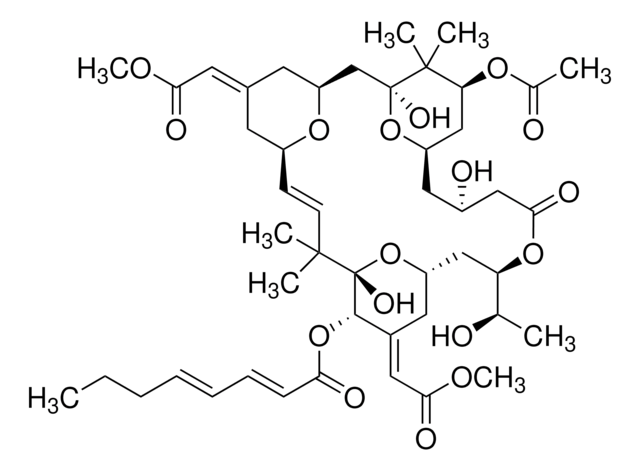SML0974
(+/-)-JQ1
≥98% (HPLC)
Synonym(s):
N-(2′,5′-Dimethoxy[1,1′-biphenyl]-4-yl)-3-fluoro-4-pyridinecarboxamide, (+/-)-SGCBD01, [(R,S)-4-(4-Chlorophenyl)-2,3,9-trimethyl-6H-1-thia-5,7,8,9a-tetraaza-cyclopenta[e]azulen-6-yl]-acetic acid tert-butyl ester
About This Item
Recommended Products
Quality Level
Assay
≥98% (HPLC)
form
powder
drug control
regulated under CDSA - not available from Sigma-Aldrich Canada
color
white to beige
solubility
DMSO: 2 mg/mL, clear (warmed)
storage temp.
2-8°C
SMILES string
CC1=NN=C2N1C3=C(C(C)=C(C)S3)C(C4=CC=C(Cl)C=C4)=NC2CC(OC(C)(C)C)=O
InChI
1S/C23H25ClN4O2S/c1-12-13(2)31-22-19(12)20(15-7-9-16(24)10-8-15)25-17(11-18(29)30-23(4,5)6)21-27-26-14(3)28(21)22/h7-10,17H,11H2,1-6H3
InChI key
DNVXATUJJDPFDM-UHFFFAOYSA-N
Application
Biochem/physiol Actions
To learn about other SGC chemical probes for epigenetic targets, visit sigma.com/sgc
Features and Benefits
Other Notes
related product
Storage Class Code
11 - Combustible Solids
WGK
WGK 3
Flash Point(F)
Not applicable
Flash Point(C)
Not applicable
Choose from one of the most recent versions:
Already Own This Product?
Find documentation for the products that you have recently purchased in the Document Library.
Customers Also Viewed
Our team of scientists has experience in all areas of research including Life Science, Material Science, Chemical Synthesis, Chromatography, Analytical and many others.
Contact Technical Service